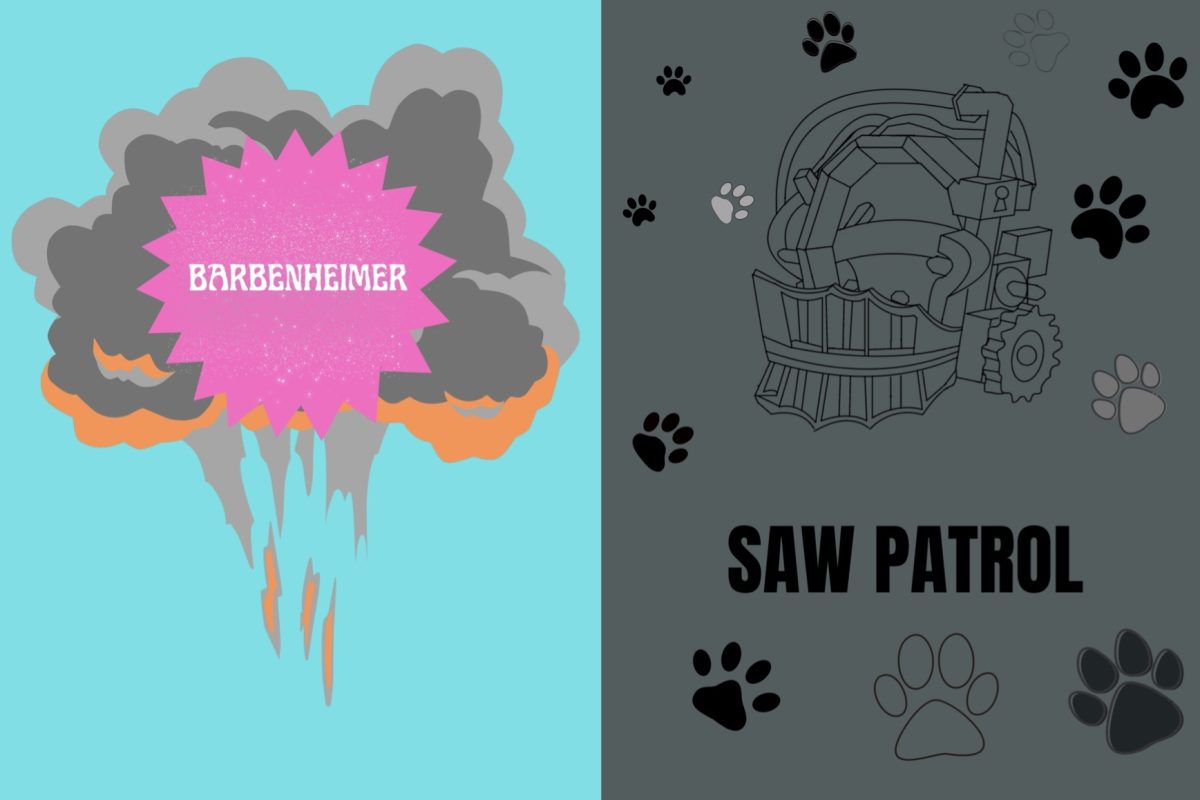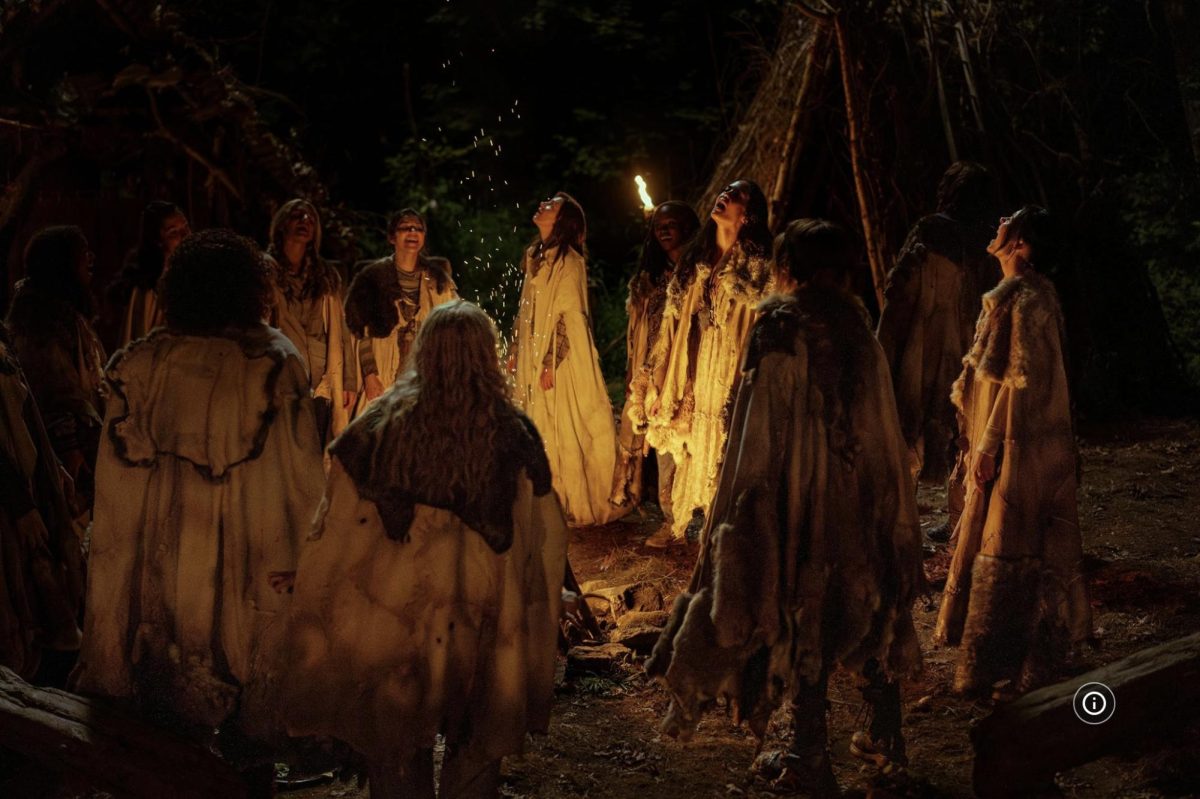Over the summer, movie enthusiasts were treated to the simultaneous release of two highly anticipated films: Greta Gerwig’s “Barbie,” and Christopher Nolan’s “Oppenheimer.” To build excitement, social media coined the term “Barbenheimer,” to refer to this double feature. Together, the films dominated both the domestic and international box offices. “Barbie,” grossed an astonishing $1.38 billion at the global box office, while “Oppenheimer,” surpassed the $900 million mark domestically.
The two studios who distributed the films, Warner Brothers and Universal, shared a prosperous success from both films. In stark contrast, Lionsgate and Paramount have not been able to replicate the same success with their movie mashup “Saw Patrol.” Shortly after Barbenheimer’s extraordinary reception, social media users quickly paired Lionsgate’s film “Saw X,” with Paramount’s “Paw Patrol: The Mighty Movie.”
Although many online users were excited for Saw Patrol, this new double feature resulted in an underwhelming public reception in comparison to Barbenheiemer. These results prompt a closer examination from studios that wish to reenact the success of Barbenheimer, and avoid the failure of Saw Patrol.
To find where Saw Patrol went wrong, we can look at the differing engagement levels of TikTok users who created the Barbenheimer and Saw Patrol trends. We can equate the underwhelming performance of Saw Patrol to the small amount of engagement leading up to its release.
The TikTok hashtag #Barbenheimer had a total of 1.2 billion views. Additionally, many of the promotional materials for “Barbie,” included original songs that received a staggering amount of usage across the platform. A couple of songs from the movie “Barbie” include, “Dance The Night Away” by Dua Lipa (used in over 485.8k videos) and “I’m Just Ken” by Ryan Gosling ( used in about 99.5k videos). The movie “Oppenheimer” also had a beautifully conducted score and it featured “Can You Hear the Music” by Hans Zimmer (used across 42.6k videos).
In sharp contrast, the hashtag #Sawpatrol barely reached 3 million views across TikTok. To make matters worse, the promotional materials for “Saw X,” such as the theme song, were only used in 29.2k posts. “Paw Patrol: The Mighty Movie” also shared low numbers in the usage of sounds across TikTok, with the original song “Bark to The Beat” by McKenna Grace, being featured in only 368 videos.
Barbenheimer had greater exposure to a widespread audience, whereas “Saw Patrol” failed to capture the attention of both moviegoers and TikTok users. The disappointment of “Saw Patrol,” can be attributed to the lackluster and uninspiring content associated with it.
Materials from “Saw X,” and “Paw Patrol: The Mighty Movie,” did not lend themselves to engagement in the form of dancing videos, comedic skits, or creative marketing efforts, in the same way “Barbie,” and “Oppenheimer,” had which was a huge component for the success of “Barbenheimer.”
It’s important to note the difference in target audiences between “Paw Patrol: The Mighty Movie” and “Saw X.” “Saw Patrol” was designed with the understanding that “Paw Patrol: The Mighty Movie” primarily targeted children, while “Saw X,” was tailored to an adult audience. Each movie in this double feature was crafted to cater to specific niche markets, and its reception within those markets should be evaluated in that context. ‘‘Barbie,” distinguished itself by encompassing a broad spectrum of themes and genres, making it inherently appealing to both children and adults while “Oppenheimer” was solely intended for an adult demographic. Although “Barbenheimer,” shares a significant overlap for intended viewers, this doesn’t result in an immediate failure for “Saw Patrol.” In many cases, films with disparate target demographics can still be financially successful, however, this was not the case for “Saw Patrol.”
Critical reception also plays a huge factor ahead of both double features. Critical reception involves the input of both audiences and movie critics alike. These two groups can have vast influence over the performance of films which determines the outcome at the box office. One well-known platform for these practices is Rotten Tomatoes.
Platforms such as Rotten Tomatoes are oriented toward critics and audiences. Together both critics and audiences compile their commentary and formulate a Tomatometer score. Many moviegoers trust this metric to guide their choices. A film’s score on Rotten Tomatoes is an important reference point for audiences and impacts their decision to buy a ticket. A high score can generate buzz and anticipation, while a low score can deter viewers.
Films like “Barbie,” and “Oppenheimer,” reached high percentages by the assembled voices of critics and audiences. “Barbie,” reached 88 percent, while “Oppenheimer,” received a staggering 93 percent. However, “Saw X,” only scored 80 percent, while “Paw Patrol: The Mighty Movie,” received 77 percent.
Since we talked about engagement with social media being an essential part of a film’s performance, the same can be said with initial reviews based on collective reception. Barbenheimer received more positive reviews than Saw Patrol. Lower ratings made it challenging for Saw Patrol to generate word-of-mouth buzz which impacted its box office performance. Barbenheimer’s high ratings, on the other hand, propelled its successful run, and it has continued to play in theaters across America since its summer release.
Exploring these essential elements is the key to unraveling the underlying causes behind these two vastly different results, shedding light on the remarkable success of “Barbenheimer,” and the failure of “Saw Patrol.” The essential elements for double features are two things, one involves social media engagement and the innovative incorporation of promotional materials and another involves favorable critical reception. Together, these elements affected both Saw Patrol and Barbenheimer as well as future releases that hope to create a social media presence and a winning double feature.
As time goes on, studios will continue to partake in simultaneous releases, but without caution, these studios are prone to receiving disappointing results at the box office as seen with Saw Patrol, but if studios keep in mind these essential elements, they will be able to gain profit and break records the same way “Barbie,” and “Oppenheimer,” did. “Barbie,” not only joined the 53 films that have crossed the $1 billion mark but also became the highest-grossing film for a female director. Meanwhile “Oppenheimer,” became the most successful biopic of all time. With the consideration of these elements, there is potential for double features to continue throughout theaters across the globe.









